
No creature in the animal kingdom is as chill as the tree-dwelling sloth. They spend their days hanging from branches, munching on leaves, sleeping and even going for the occasional swim. What's not to love?
Image via Getty Creative
All Sloths Have Three Toes

Though sloths are considered either two-toed or three-toed, all sloths have three toes on their hind limbs. The difference is actually in the forelimbs, on which the two-toed sloth has two fingers. The discrepancy comes from the Spanish-to-English translation of two-toed sloth, "Perezoso de Dos Dedos." "Dedos" means "fingers" but was mistranslated to "toes."
Image via Getty Creative
Their Ancestors Were Huge

Millions of years ago, some ancestors of today's sloths were the size of elephants. Ground sloths, as they are called, used to roam the earth and graze from the treetops. They are believed to have once roamed across South and North America.
Image via Getty Creative
They Move Slowly on Land But Are Good Swimmers

Sloths are considered the slowest mammals on the planet. But they are excellent swimmers and can move three times as fast in water than on land. Sloths are efficient swimmers thanks to their long arms.
Image via Getty Creative
They Have Funny Bathroom Habits

Sloths must climb out of their protective tree habitats and come close to the ground to use the bathroom. Once a week, they climb down the trunks of their tree homes to the same spot, grip the tree and defecate. Because they're creatures of habit, this is their most vulnerable time as they are very susceptible to predators.
Image via Associated Press
They Have a Super Strong Grip
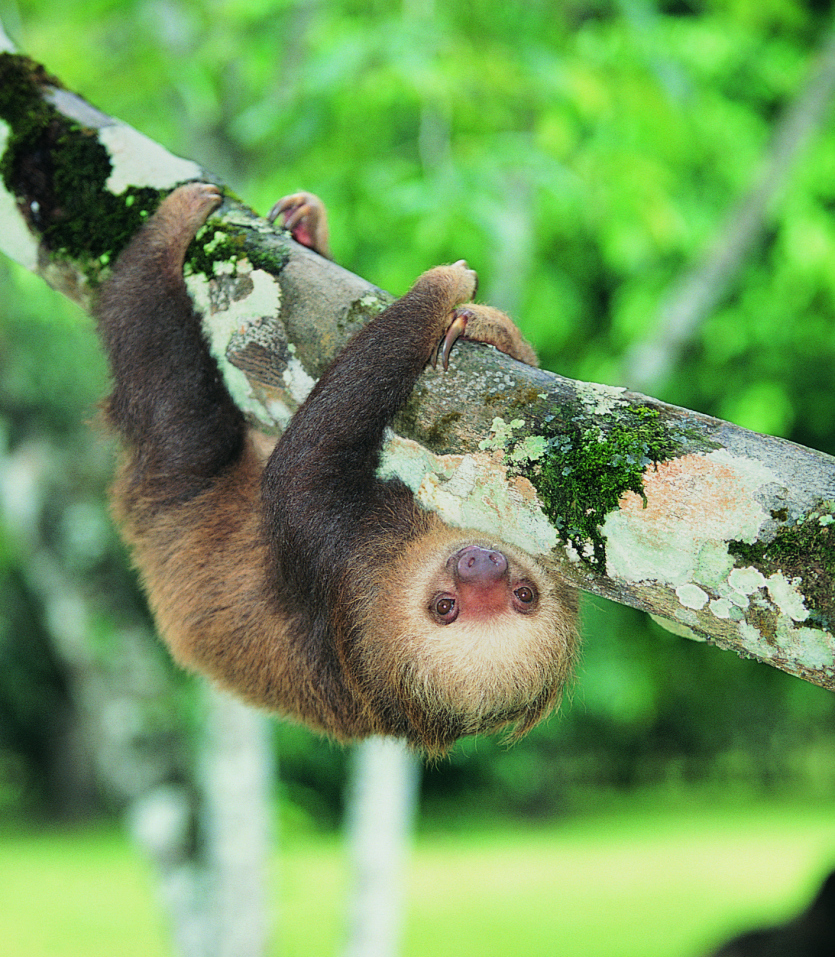
Sloths have adapted very long and strong claws with a grip that can stay hanging onto tree branches even while the animal is sleeping. In fact, some sloths have been found to have died while still hanging by their claws.
Image via Getty Creative
Their Fur Contains an Ecosystem
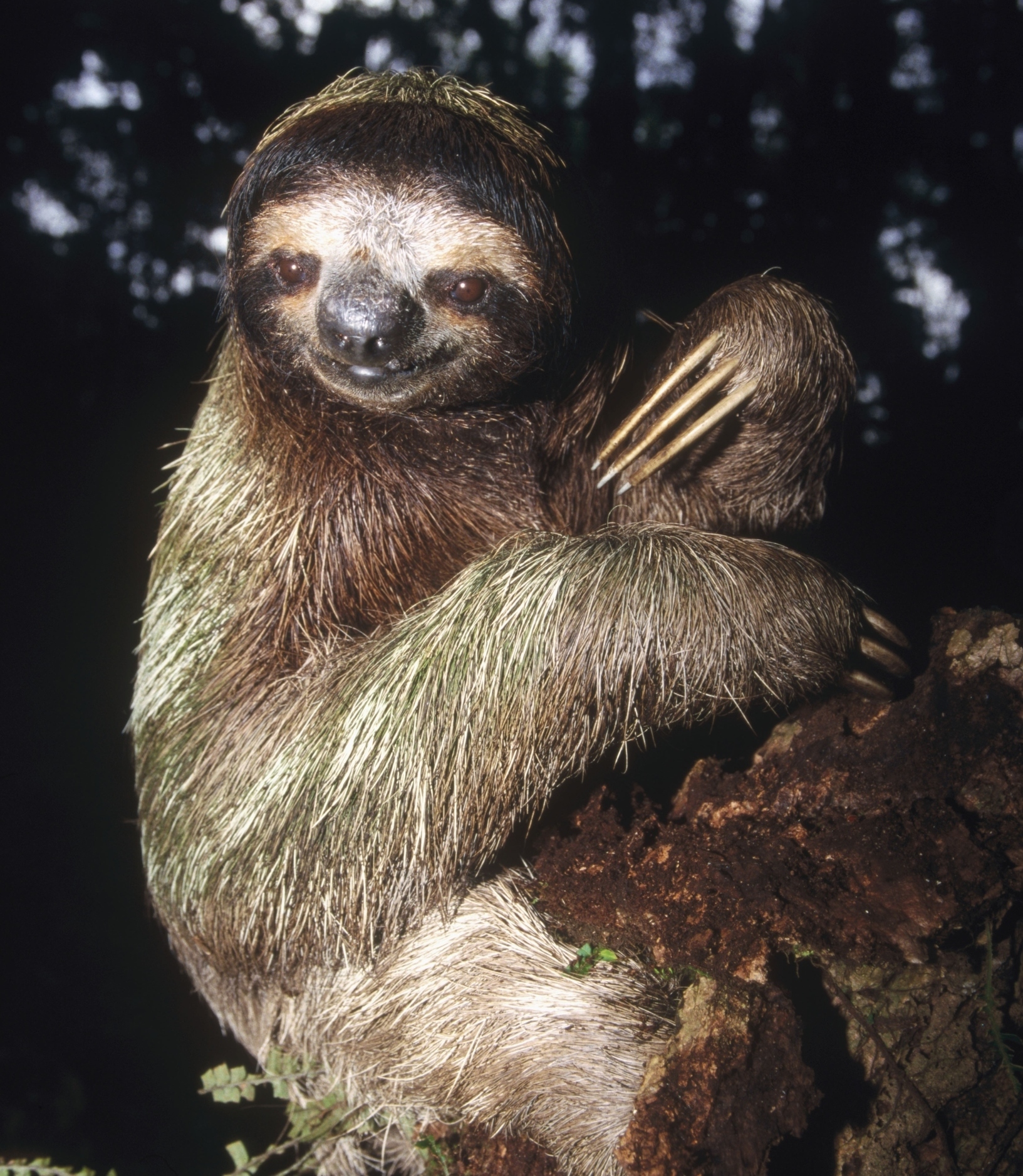
Sloths move so slowly that algae grows on their fur, turning some sloths a fuzzy green color. But did you know their fur is also home to a whole host of other creatures? Sloths are covered in ticks, beetles, moths, mites and hundreds of other bugs.
Image via Getty Creative
They Have Three Main Predators
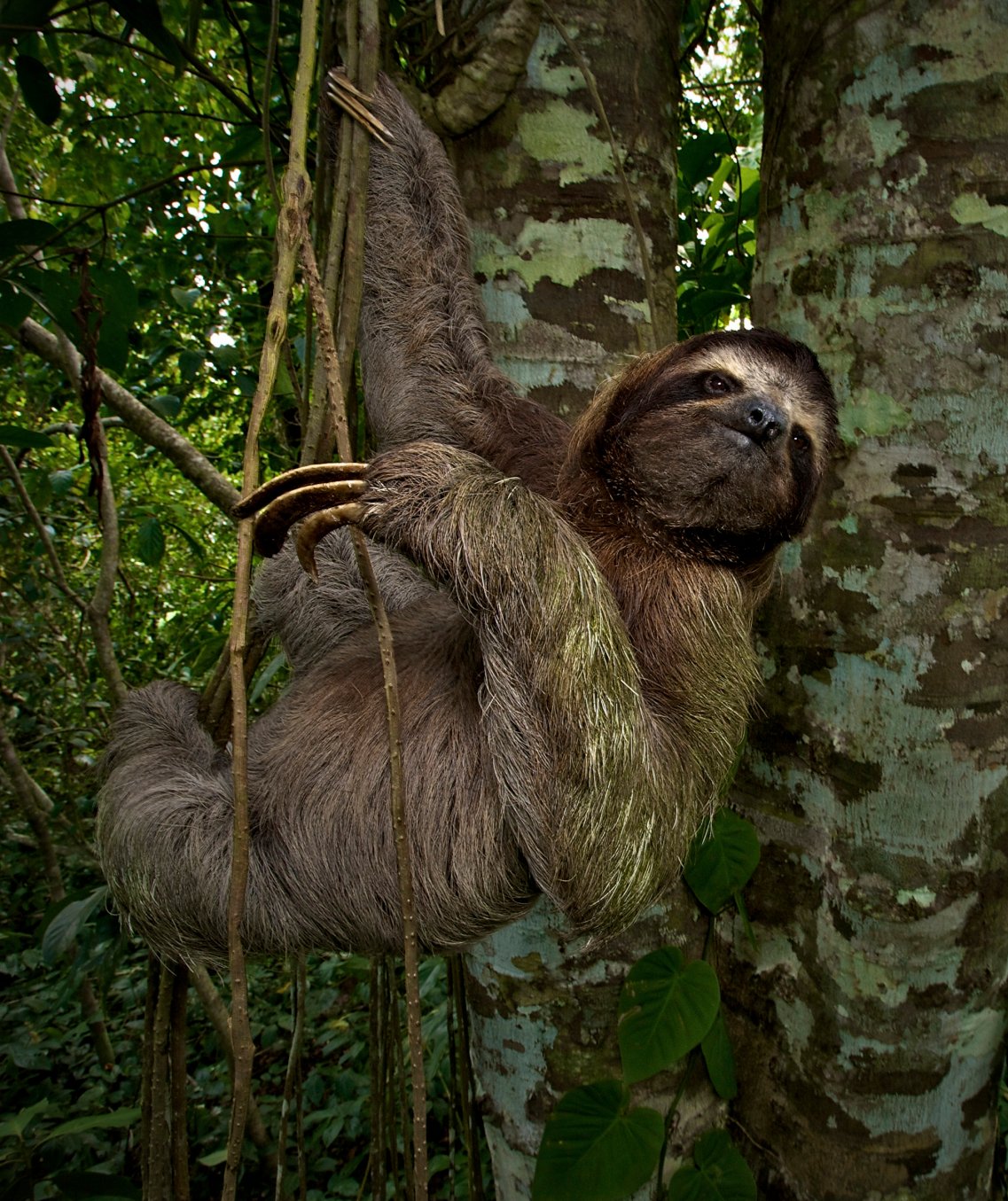
Besides the danger that humans can exert on the habitats of sloths, they also have to watch out for jaguars, snakes and eagles. Luckily, their slow-moving nature and the green algae they grow on their fur acts to camouflage them from predators. If they are confronted, they defend themselves by lashing out with their claws.
Image via Getty Creative
They Have a Limited Diet
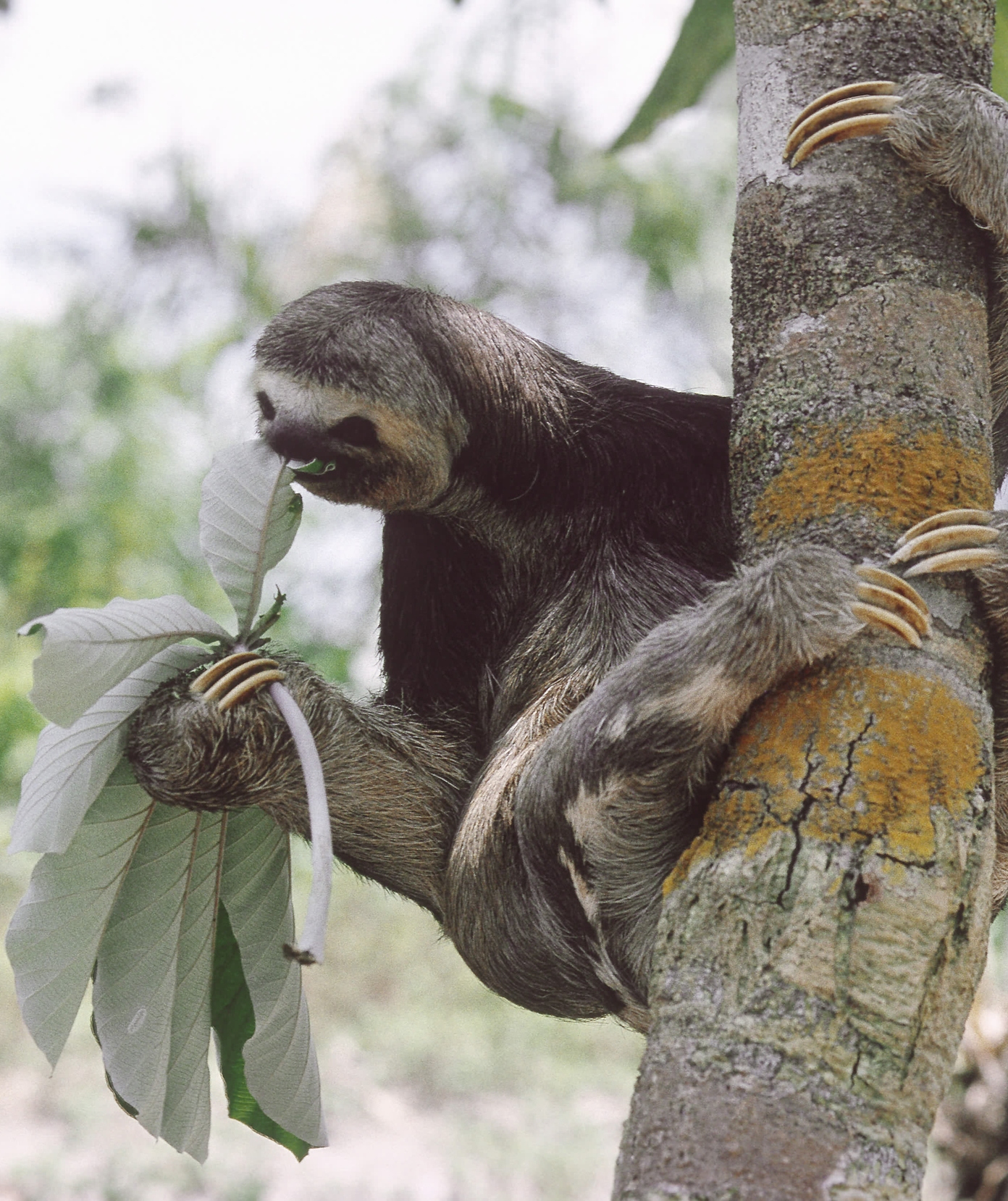
Sloths only eat leaves and — sparingly — fruit, which leaves them with very little nutrition and calories for energy. One of the reasons the sloth moves so slowly is that it needs to conserve the limited energy they get from their diets. They have a very slow metabolic rate — about half the normal rate of other mammals their size.
Image via Getty Creative
They Have Flexible Heads

Sloths spend most of their lives hanging upside down from the treetops. Because it's not always easy to see when you're upside down, some species of sloth — mainly the pygmy three-toed sloth — have evolved the ability to twist their necks and turn their heads almost 360 degrees.
Image via Getty Creative
They Don't Sleep All Day
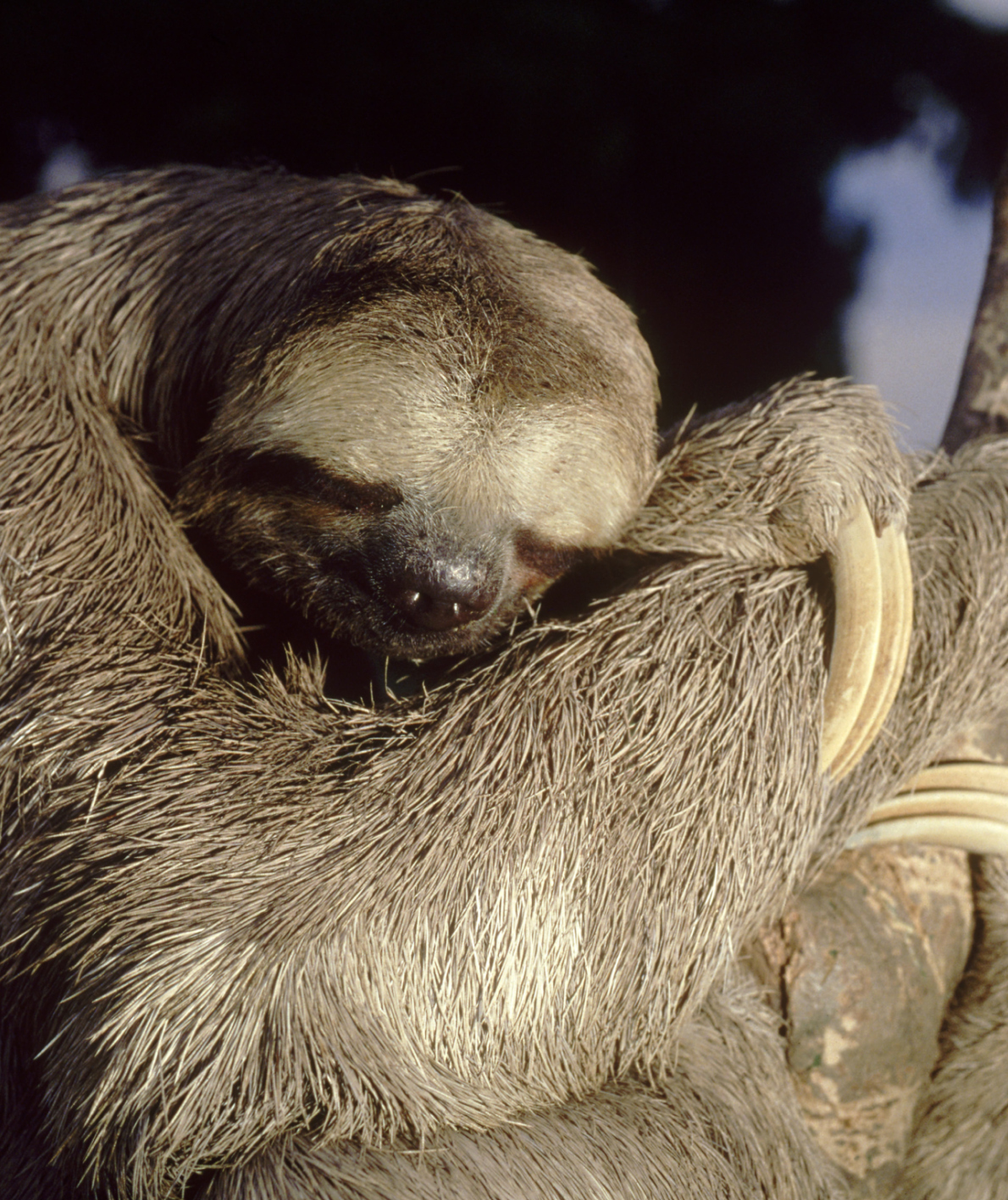
There is a misconception that sloths spend most of their lives sleeping. In fact, new research shows that wild sloths only spend about 10 hours of their day asleep, not 20 hours as was previously thought. It's the captive sloths that tend to spend more time sleeping.
Image via Getty Creative



